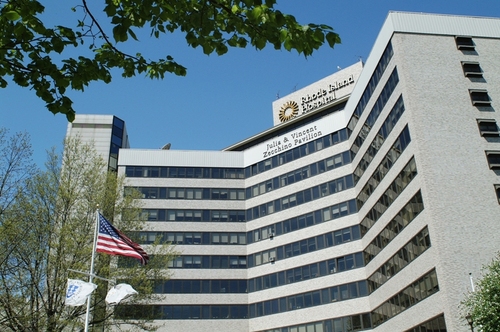Rhode Island Hospital: A “Shining Example” of Optimized Demand Response

When electricity prices in New England were on the rise in 2014/2015, Rhode Island Hospital braced for an energy spend they thought would lead a $1 million budget deficit.
With demand response and CPower’s energy management team in their corner, the hospital’s actual energy spend was much more favorable.
By participating in the ISO New England’s three demand response programs (Transitional Price Responsive Demand (TRPD), Real Time Demand Response and Real Time Emergency Generation) Rhode Island Hospital managed to offset their energy spend with the kind of efficiency that should make other New England hospitals take notice.
“We ended up breaking even,” said Marc Leduc, the Chief Engineer at the hospital’s on-site power plant. “A lot of it was due to those [demand response] programs.”
Founded in 1863, The Rhode Island Hospital is the principal teaching hospital of The Warren Alpert Medical School of Brown University. It is also a major trauma center for southeastern New England, and home to Hasbro Children’s Hospital, the state’s only facility dedicated to pediatric care.
In the mid-1970’s, Rhode Island Hospital constructed a cogeneration power plant on its grounds to provide electricity for the hospital’s day to day needs. Today, that power plant produces roughly 50% of the energy the hospital uses. Cost, particularly the cost of natural gas which the plant uses to create electricity, is a crucial factor in determining how the hospital manages its energy.
“Every dollar the hospital can save on electricity is a dollar that can be spent providing better medical care for the patients,” said Mr. Leduc. “Demand response helps keep us on budget by offsetting the cost of energy, especially during years when the price of gas is high.”
Bill Cratty, CPower’s Senior Technical Sales Associate for the New England region, initially enrolled Rhode Island Hospital in the ISO-NE’s demand response programs in 2007. Since then, he has worked closely with the Providence-based health care facility to help fine tune its demand response participation. Today he believes Rhode Island Hospital is a model to which other New England hospitals should look when considering how to offset their own energy costs.
“Rhode Island Hospital is a shining example of what a hospital can do to optimize their energy management,” Mr. Cratty said. “By participating in the TPRD program, they not only avoided purchasing electricity from the utility, but also got paid by ISO-NE for the amount of electricity they generated and bid into the day ahead market. The hospital consumed all of the electricity it generated. The payment it received from its demand response participation more than offset the cost to generate, so the hospital essentially received a significant portion of its energy usage at a negative cost.”


